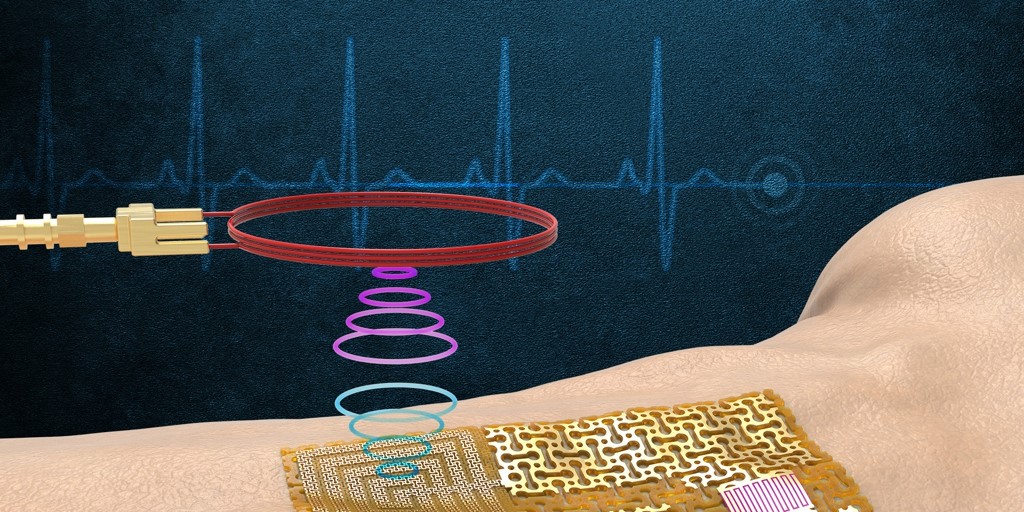
A chip-free, wireless, electronic skin
Wearable sensors are ubiquitous thanks to wireless technology that enables a person's glucose concentrations, blood pressure, heart rate, and activity levels to be transmitted seamlessly from sensor to smartphone for further analysis.
Engineers have devised a new kind of wearable sensor that communicates wirelessly without requiring onboard chips or batteries.
The team's sensor design is a form of electronic skin, or "e-skin"—a flexible, semiconducting film that conforms to the skin like electronic Scotch tape. The heart of the sensor is an ultrathin, high-quality film of Gallium nitride, a material that is known for its piezoelectric properties, meaning that it can both produce an electrical signal in response to mechanical strain and mechanically vibrate in response to an electrical impulse.
They showed that the device was sensitive enough to vibrate in response to a person's heartbeat, as well as the salt in their sweat, and that the material's vibrations generated an electrical signal that could be read by a nearby receiver. In this way, the device was able to wirelessly transmit sensing information, without the need for a chip or battery.
The researchers see their results as a first step toward chip-free wireless sensors, and they envision that the current device could be paired with other selective membranes to monitor other vital biomarkers.
 English
English Arabic
Arabic


